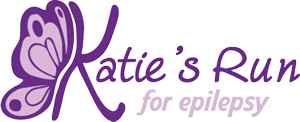More Epilepsy Stories
Gary Collins – Executive Director, Epilepsy Canada
 This is my story.
This is my story.
In 1985, I returned from a long business trip in Dallas. The flight was delayed and I didn't get home until almost 2am. We were living in Markham at the time and I was commuting downtown every day when I wasn't on the road. The Board needed a report on our business opportunities in the Western US, which was the territory I managed. As you can imagine we didn't have computer notebooks at that time so I left home around 4am to get downtown, get to my desk and complete my report in time for the Board Meeting which was scheduled for 8:30am.
At around 8am, I finished my report and headed to the printer to retrieve my printed draft. As I approached my desk, I went blank and my legs left me. I awoke moments later, looking at the carpet, unable to put together my name, where I was, what I was doing. To make matters worse, there were several people hovered over me asking me too many questions. My head was bleeding as I apparently hit the corner of the desk on the way down. No one was sure what had happened.
Our secretary suggested that she'd take me to the hospital and we grabbed a cab and headed down the road to Mount Sinai. Unfortunately for Sherri, I had two more episodes in the cab on the way to the hospital. At Mount Sinai, I had 2 more. At 30 yrs old, it was discovered that I had epilepsy. That year was very difficult as we discovered all the consequences of becoming, or finally realizing, I was an epileptic. The happy ending for me was that we learned that my seizures could be controlled through the use of Dilantin. I remain on Dilantin today.
However, I also discovered that I was DIFFERENT in a very profound way. And, rather than sharing my experience, I put it away in a black box, locked it and threw away the keys. For the next 20 years I never told a soul, not one person and only my immediate family knew of my disorder.
I was afraid. I was afraid that people would treat me differently. I was most definitely afraid to tell my employers. I was ambitious. I wanted to accomplish all of my personal and business goals. I was afraid my employers wouldn't give me the opportunity to take on greater responsibilities if they felt I wouldn't be able to handle the pressure.
In addition to being afraid, I was annoyed. I was annoyed because no one could tell me WHY I had this disorder. No one could tell me how I could cure it. No one fully explained the consequences or side effects of taking a severe medication for 30, 40 or 50 years. No one told me, until 2010, that I could die from epilepsy. It wasn't until 2010 that the medical community finally began to come clean about SUDEP (Sudden Unexplained Death from Epilepsy).
Everyone's Story
In 2010, I also learned that I'm very fortunate. I'm lucky, statistically. I was invited to join the Board of Directors of Epilepsy Canada and when I joined the Board I learned that my story was everyone's story. People with epilepsy often suffer in silence. Here are some startling facts.
Today, 42 Canadians will learn that they have epilepsy. Approximately 300,000 Canadians now live with this neurological disorder; a condition that causes sudden bursts of hyperactivity in the brain and reveals itself in the form of seizures.
Since 1920, epilepsy has been treated with a variety of medications which are effective in only 70% of the patients with the condition. There are numerous undesirable side effects with different medications. By its nature and treatment, epilepsy brings with it a heavy medical and psychosocial burden for every patient, with an increased incidence of learning difficulties, a lower employment rate despite demonstrated competence and many prejudices experienced by people affected by epilepsy and those close to them.
After joining the Board, and being responsible for our marketing efforts, Epilepsy Canada implemented a mandate in 2012 to 'Break the Silence' surrounding Epilepsy - to encourage dialogue of those with the condition, their families and society as a whole. The stigma and psychosocial burden for every patient with the condition are key contributing factors to the struggle with mental health and wellness. The stigma surrounding epilepsy is often fuelled by ignorance, miscommunication and misleading 'facts' about epilepsy.
Society's views on epilepsy presently encourage patients and their families to remain silent and keep their condition hidden. Suppressing feelings about an epilepsy diagnosis for fear of rejection and embarrassment can lead to depression, anxiety, social isolation, fear and in extreme cases suicide.
Our initiative is well under way and we are encouraging people to come forward and speak about their experience to eliminate the fear of discrimination and bullying caused by the condition. In doing so, our goal is to reduce the incidence of depression and anxiety for those with epilepsy to increase their chances of living normal and productive lives.
30% of those affected by epilepsy are unable to manage their disorder through medication. For those people, they live a complete life of disorder. They can have a seizure at anytime and anywhere. When I joined Systemgroup I learned that Dan's wife Meagan is one of the 30%. She cannot drive and she's unable to join the workforce. And, of course, Meagan and Dan don't share their story. I'm sure if we talked to other people in the company, we'd find more people affected one way or another by epilepsy.
Epilepsy Canada is our country's only national organization with a mission to enhance the quality of life for persons living with epilepsy through the funding of research. It receives no government money and relies entirely on private and corporate donations to achieve its goals.
There is some fantastic research being conducted today and one of those projects is in Ontario. Dr. Peter Carlen, of Toronto Western Hospital, is working on the 'pace maker for the brain'. Peter envisions being able to insert a 'chip' into the base of someone's skull that will both detect the onset of a seizure and then, simultaneously send a 'electrical wave' to stimulate the brain, thereby eradicating any seizure. This could revolutionize our disorder and profoundly change the way patients receive treatment. It goes without saying that research of this kind requires millions of dollars.
Gary Collins
Toronto, Ontario (2014)
Back to Top
Contact us at info@katiesrun.ca
